Several steps to getting your answer...
Demo: http://jsfiddle.net/m1erickson/hvT63/

Determine the bounding box of the player-pixels (excluding transparent pixels).
Use .getImageData to get the individual pixel data for the image.
Examine each vertical column from the left and determine where the first player-pixel occurs.
Examine each vertical column from the right and determine where the first player-pixel occurs.
Examine each horizontal row from the top and determine where the first player-pixel occurs.
Examine each horizontal row from the bottom and determine where the first player-pixel occurs.
Now you have top, left, bottom & right bounding values.
Determine the radius of the bounding box (== half of its diagonal):
var dx=right-left;
var dy=bottom-top;
var radius=Math.sqrt(dx*dx+dy*dy)/2;
So your containing circle has that calculated radius.
Here's example code:
<!doctype html>
<html>
<head>
<link rel="stylesheet" type="text/css" media="all" href="css/reset.css" /> <!-- reset css -->
<script type="text/javascript" src="http://code.jquery.com/jquery.min.js"></script>
<style>
body{ background-color: ivory; padding:20px; }
#canvas{border:1px solid red;}
</style>
<script>
$(function(){
var canvas=document.getElementById("canvas");
var ctx=canvas.getContext("2d");
ctx.translate(.5,.5);
var img=new Image();
img.crossOrigin="anonymous";
img.onload=start;
img.src="https://dl.dropboxusercontent.com/u/139992952/stackoverflow/sprite.png";
function start(){
var cw=canvas.width;
var ch=canvas.height;
ctx.drawImage(img,cw/2-img.width/2,ch/2-img.height/2);
var data=ctx.getImageData(0,0,cw,ch).data;
var leftX=getLeft(data,cw,ch);
var rightX=getRight(data,cw,ch);
var topY=getTop(data,cw,ch);
var bottomY=getBottom(data,cw,ch);
var w=rightX-leftX;
var h=bottomY-topY;
var cx=leftX+w/2;
var cy=topY+h/2;
var radius=Math.sqrt(w*w+h*h)/2;
ctx.beginPath();
ctx.arc(leftX+w/2,topY+h/2,radius,0,Math.PI*2);
ctx.closePath();
ctx.stroke();
ctx.strokeRect(leftX,topY,w,h);
}
function getLeft(data,width,height){
for(var x=0;x<width;x++)
for(var y=0;y<height;y++)
{
if(data[(width*y+x)*4+3]>0){ return(x); }
}
}
function getRight(data,width,height){
for(var x=width-1;x>=0;x--)
for(var y=height-1;y>=0;y--)
{
if(data[(width*y+x)*4+3]>0){ return(x); }
}
}
function getTop(data,width,height){
for(var y=0;y<height;y++)
for(var x=0;x<width;x++)
{
if(data[(width*y+x)*4+3]>0){ return(y); }
}
}
function getBottom(data,width,height){
for(var y=height-1;y>=0;y--)
for(var x=width-1;x>=0;x--)
{
if(data[(width*y+x)*4+3]>0){ return(y); }
}
}
}); // end $(function(){});
</script>
</head>
<body>
<h4>1. Calc boundingbox of non-transparent pixels<br>2. Calc radius that contains that boundingbox</h4>
<canvas id="canvas" width=300 height=300></canvas>
</body>
</html>



